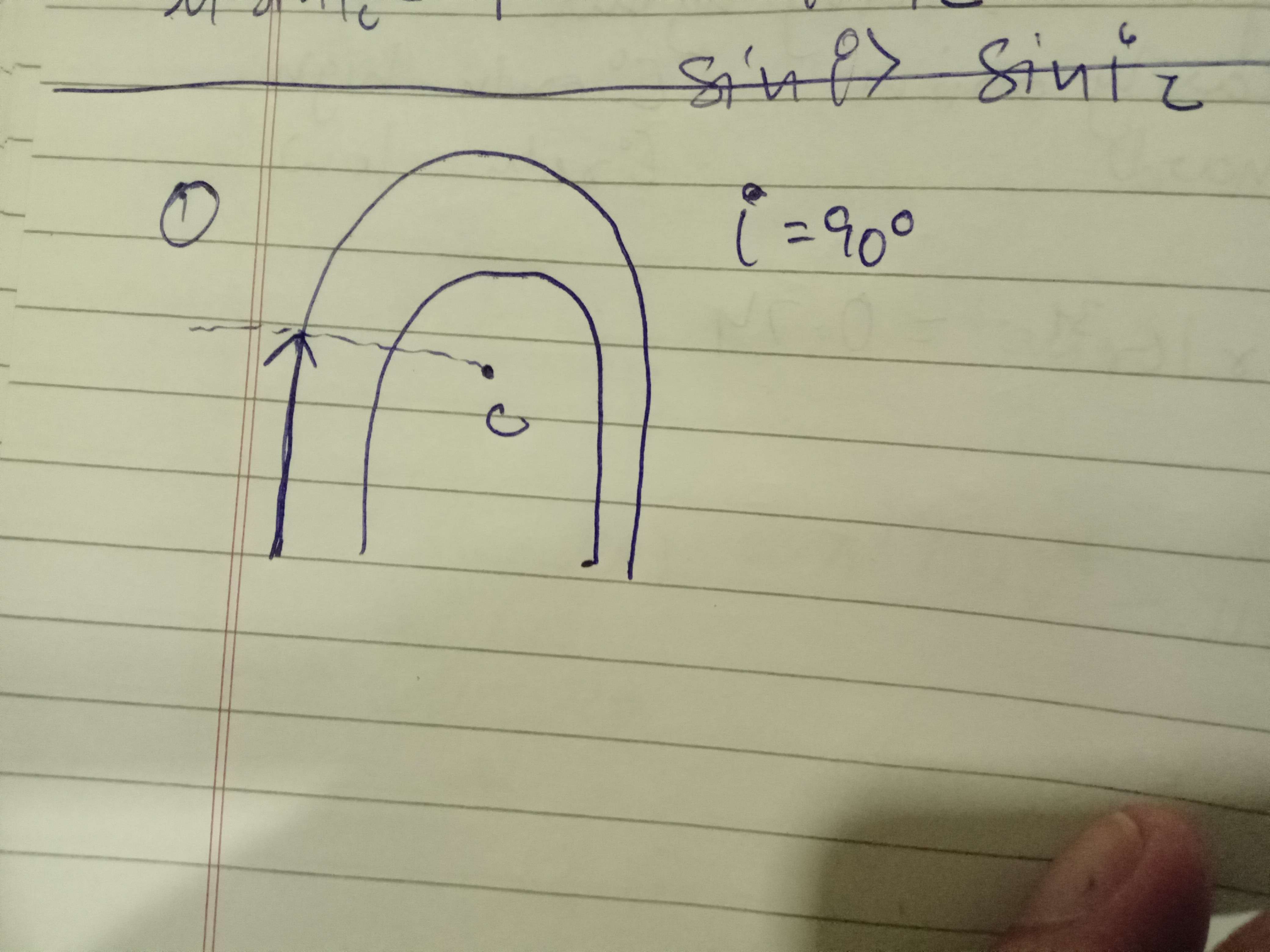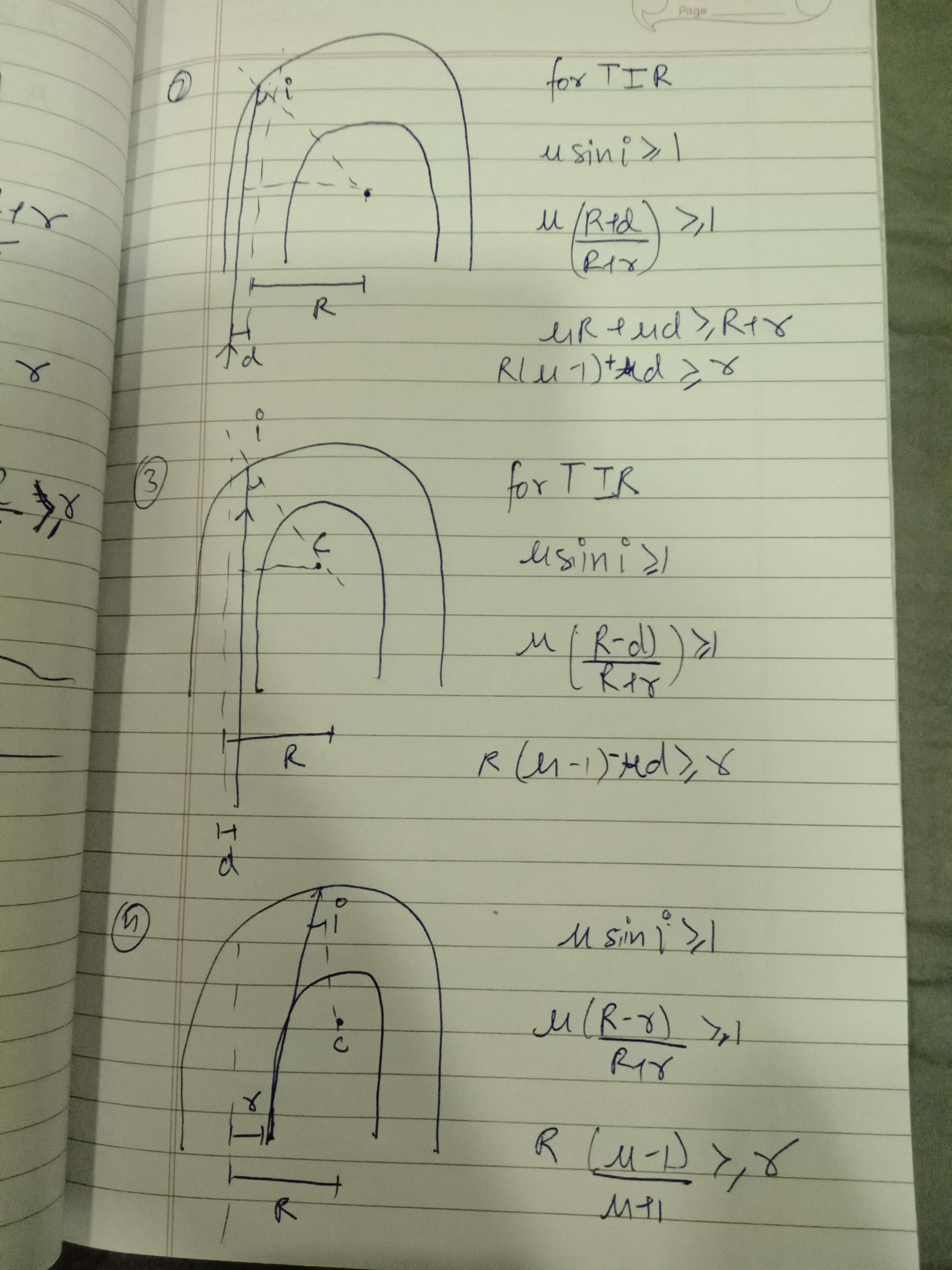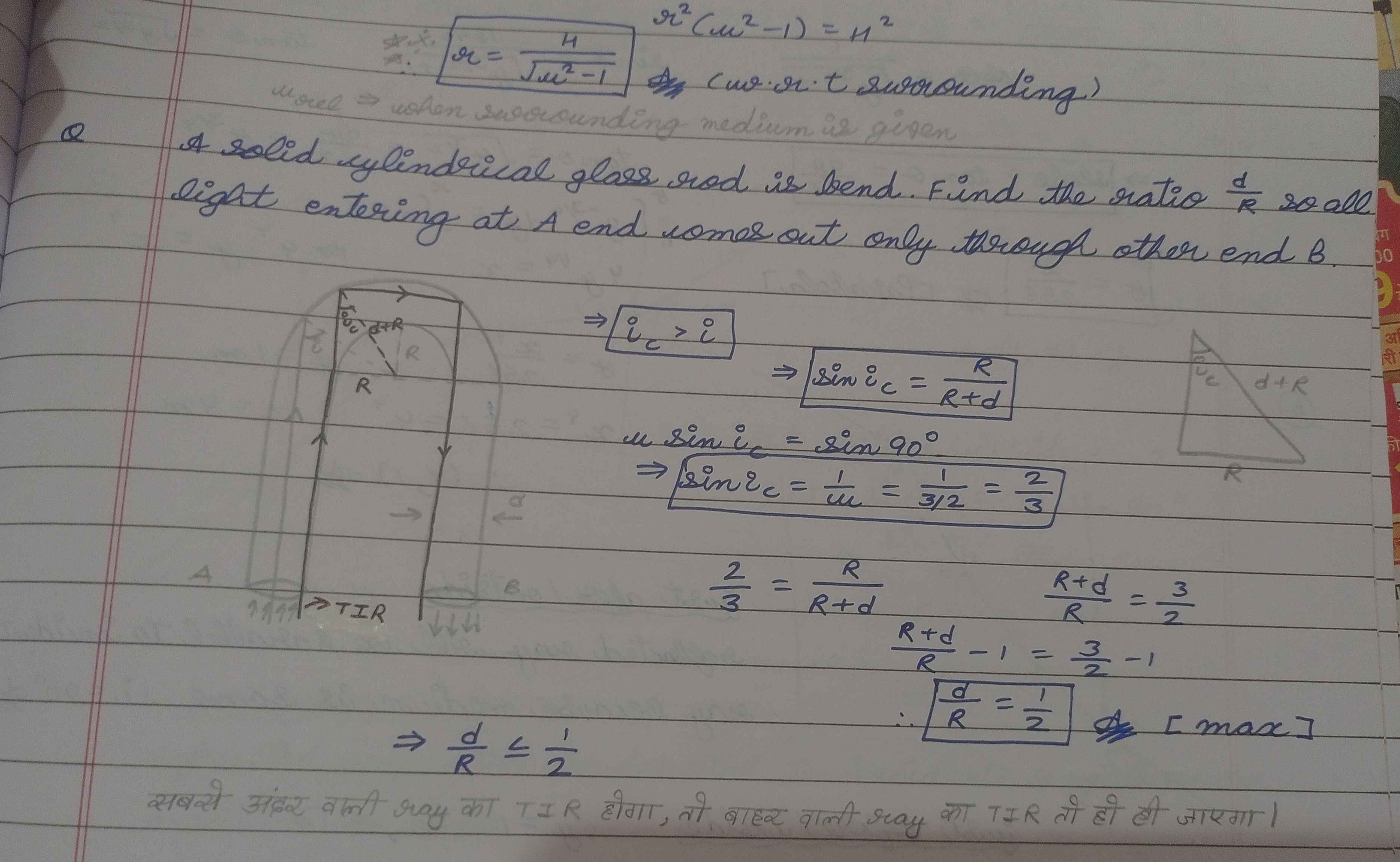12 Replies
@Gyro Gearloose
Note for OP
+solved @user1 @user2... to close the thread when your doubt is solved. Mention the users who helped you solve the doubt. This will be added to their stats.Acc to what I've done shouldn't case 2 give maxima



for tir shouldnt i > ic ( ic being critical incidence angle)
also where are my cases wrong
basically, if u conisder many light coming, for all of thm to perform TIR the light wth least angle should just be able at critial angle, so the rest of light which have angles obv greater than this will automatically perform TIR

no ur case 3 is applicable only in this question, since thats when all the light will perform TIR
i understand i1>i2>i3>i4 > ic
so yes agar i4 mein hua tir toh baaki mein obv hoga
but why does the mathematical analysis say otherwise
wdym mathematical analysis
like how does it contradict our result
for example if i take d= r/2 in case 2 i get 2R >= r
yea whats wrong in tht?
it tells u tha when 2R>=r only rays left of d wlll undergo TIR
didnt get this part
